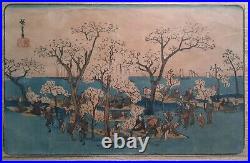
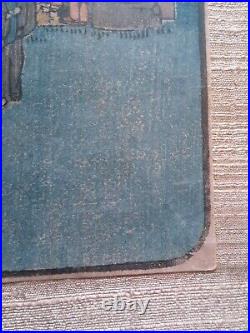

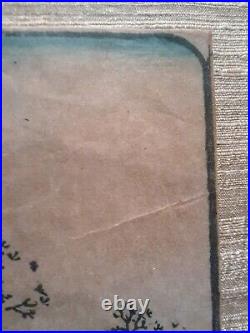
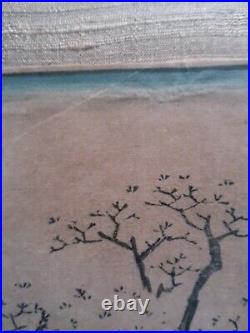
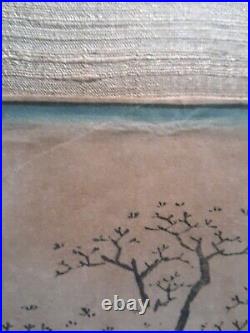
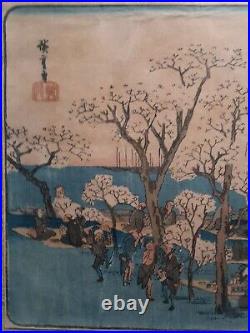
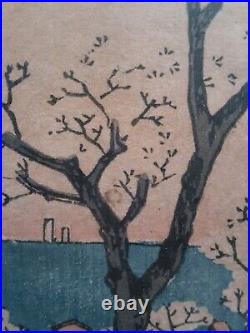
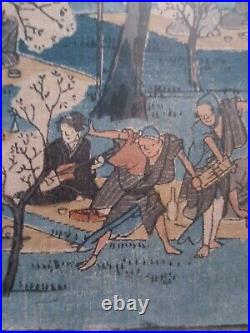
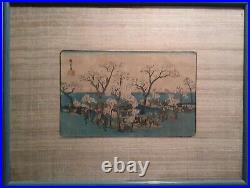
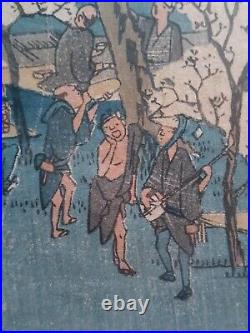


Original Utagawa Hiroshige Japanese woodblock print “Amusements at Goten-yama” (Goten-yama yky), from the series Famous Places in Edo (Kto meisho). Hiroshige was born in Edo (present day Tokyo) in 1797, the son of a fireman. After his parents died, Hiroshige began studying the art of woodblock printing with Toyohiro in 1810 or 1811, at age thirteen or fourteen. His earliest prints were primarily book illustrations, and it wasn’t until the 1830s that Hiroshige began to find success with the genres for which he would become best known: landscapes and kacho-e, birds and flower prints. Hiroshige expertly captures moody and atmospheric weather conditions, rendering mist, rain, snow, and evening effects with great skill and beauty. His poetic landscapes have a distinctly human touch about them, the addition of figures that lend a personal element to balance the beauty and wonder of nature. The popularity of his initial Tokaido Road prints led Hiroshige to design nearly twenty different versions of the series during his lifetime, but he also created many other acclaimed landscape series, including the Sixty-nine Stations of the Kisokaido Road, Thirty-six Views of Mount Fuji, Famous Views of the Eastern Capital, Famous Views of the Sixty-odd Provinces, and One Hundred Famous Views of Edo, his late masterwork. Hiroshige was a prolific artist, designing an estimated 4,500 prints, mainly landscapes. Among Japanese woodblock printing, Hiroshige ranks not only as one of the leading landscape artists, but also as one of the greatest masters of the medium. His romantic and moody evocations of nature capture a distant time and place that still holds a fascination for viewers today. For scholars and collectors, Hiroshige’s death marked the beginning of a rapid decline in the ukiyo-egenre, especially in the face of the westernization that followed the Meiji Restoration of 1868. Hiroshige’s work came to have a marked influence on western European painting towards the close of the 19th century as a part of the trend in Japonism. Western European artists, such as Manet and Monet, collected and closely studied Hiroshige’s compositions. Vincent van Gogh even went so far as to paint copies of two of Hiroshige’s prints from One Hundred Famous Views of Edo: Plum Park in Kameido and Sudden Shower over Shin-hashi bridge and Atake. Framed measures 25 by 19 inches, woodblock print 13.75 by 8.5 inches. This item is in the category “Antiques\Asian Antiques\Japan\Prints”. The seller is “skalsolga” and is located in this country: US. This item can be shipped worldwide.
- Primary Material: Paper
- Type: Woodblock print
- Color: Multi-Color
- Original/Reproduction: Original
- Region of Origin: Japan
- Age: 1800-1849
- Maker: Utagawa Hiroshige
